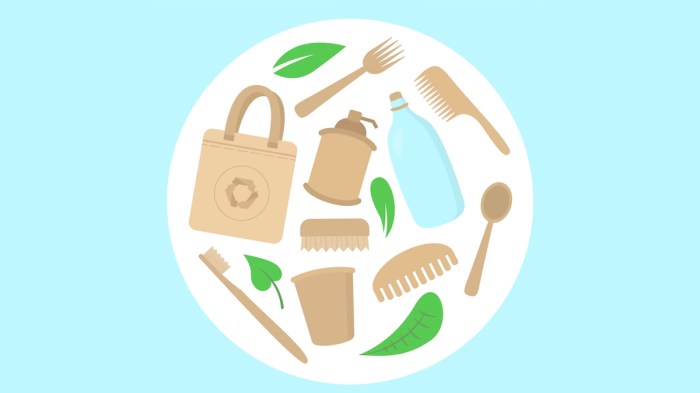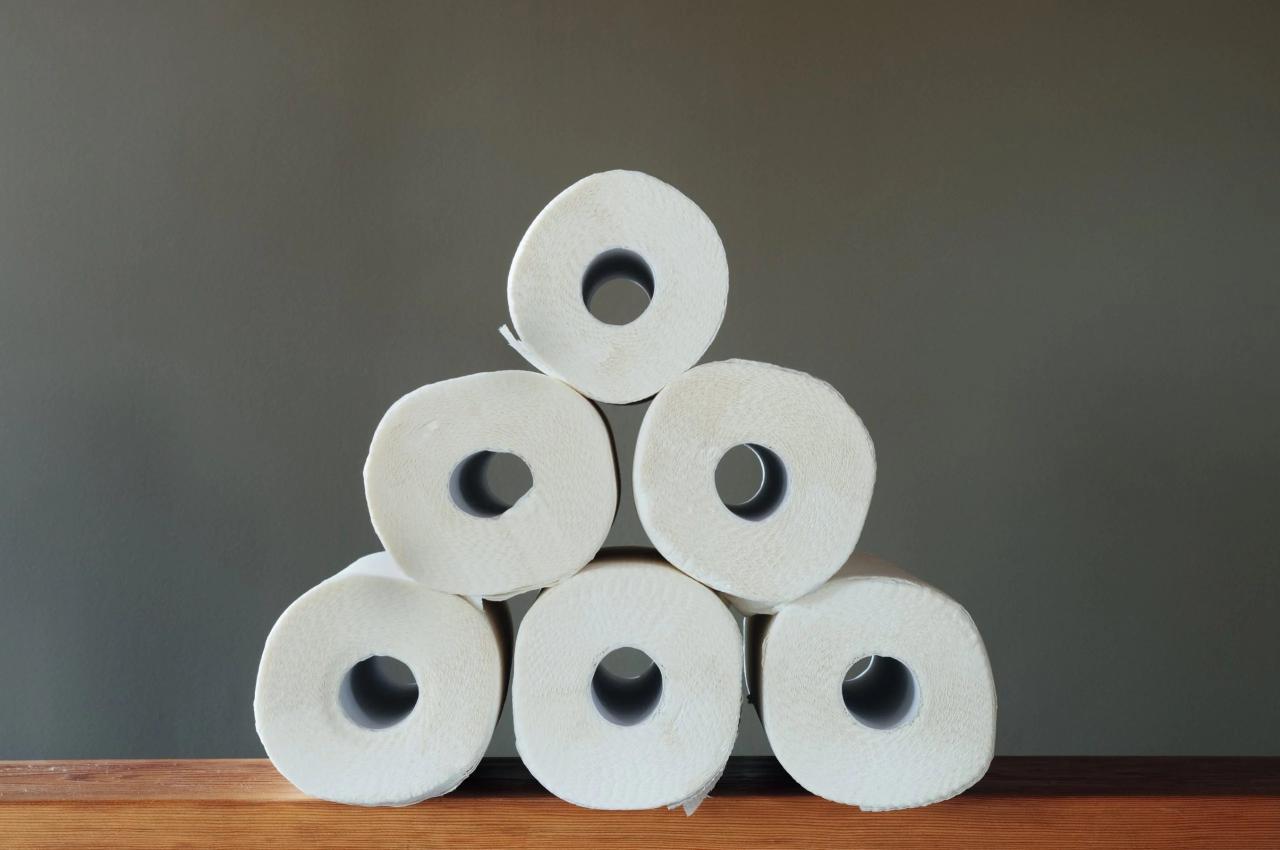
Reusable household items are becoming essential in our pursuit of a more sustainable lifestyle. As we navigate through an age where environmental concerns are at the forefront, making simple changes at home can significantly reduce our ecological footprint. By opting for items that can be used multiple times, we not only contribute to waste reduction but also promote a healthier planet for future generations.
From sturdy shopping bags to durable storage containers, the variety of reusable items available today makes it easier than ever to embrace eco-friendly practices. These products are designed to last, saving money in the long run while also enhancing our daily lives. Let’s explore how incorporating reusable household items can transform our homes and contribute to a greener future.
The Importance of Reusable Household Items
The rise of disposable products has led to a significant increase in waste generation, impacting our environment in alarming ways. With the global focus on sustainability, reusable household items have emerged as a vital solution to counteract the negative effects of single-use items. Transitioning from disposable to reusable alternatives not only benefits the planet but also promotes a more sustainable lifestyle.The environmental impacts of single-use items are vast and detrimental.
According to the Environmental Protection Agency (EPA), the United States alone generated approximately 292.4 million tons of trash in 2018, with plastics comprising a significant portion of this waste. Single-use plastics, such as straws, cutlery, and bags, often end up in landfills or oceans, contributing to soil and water pollution. These items can take hundreds of years to decompose, posing a serious threat to wildlife and marine ecosystems.
Contribution of Reusable Items to Sustainability
Reusable household items play a crucial role in reducing waste and fostering a more sustainable way of living. By opting for reusables, individuals can significantly limit their environmental footprint. Utilizing items such as stainless steel water bottles, cloth shopping bags, and glass containers reduces the demand for single-use products, thus conserving resources and energy that go into their production.The impact of incorporating reusable items into daily habits is substantial.
For instance, switching to a reusable shopping bag can save approximately 1,000 plastic bags over its lifetime. In terms of statistics, a study by the Eunomia Research & Consulting highlights that if every household in the UK switched to reusable bags, it could prevent the use of around 2 billion plastic bags annually. This reduction not only diminishes landfill waste but also curtails the energy and resources required for producing new plastic bags.
“Transitioning to reusable items can lead to a significant decrease in waste generation and foster a sustainable lifestyle.”
The benefits of reusables extend beyond waste reduction; they also promote conservation of resources. For instance, producing a single paper towel requires cutting down trees, whereas using washable cloth towels can minimize deforestation and preserve natural habitats. Moreover, stainless steel and glass containers can be reused for years, providing an eco-friendly alternative to single-use plastic containers.The cumulative effect of these sustainable choices leads to a cleaner environment and a healthier planet for future generations.
By embracing reusable household items, we actively participate in the global effort to combat pollution and climate change, making a positive impact one small choice at a time.
Types of Reusable Household Items
Reusable household items come in various forms and serve multiple purposes in everyday life. These items not only help reduce waste but also promote a sustainable lifestyle. By incorporating reusable products into our homes, we can drastically decrease our reliance on single-use items, which are a significant contributor to environmental pollution. Understanding the types of reusable items available is essential for making informed choices that benefit both our households and the planet.Reusable items can be categorized into several types, each designed for specific functions.
It’s important to recognize the materials used in these products, as they often dictate their durability and longevity. Below are some common types of reusable household items along with examples of materials employed in their production.
Bags and Containers
Bags and containers are among the most widely recognized reusable household items. They come in various sizes and styles, suited for different purposes such as shopping, storage, or meal prep. Understanding their materials and longevity is crucial for maximizing their benefits.
- Reusable Shopping Bags: Typically made from durable fabrics like cotton, jute, or recycled polypropylene. These bags are designed to withstand heavy loads and frequent use, often lasting for years with proper care.
- Food Storage Containers: Often made from glass or BPA-free plastic, these containers can endure repeated use and exposure to varying temperatures. Glass containers are especially durable, resistant to stains, and do not leach chemicals into food.
- Lunch Boxes and Food Wraps: Stainless steel or silicone lunch boxes are highly durable options that can last for many years. Additionally, beeswax wraps, made from cotton infused with beeswax, provide a sustainable alternative to plastic wrap, lasting for about a year with proper maintenance.
Utensils and Cutlery
Utensils and cutlery are essential components of any kitchen, and opting for reusable options can significantly reduce single-use plastic waste. There are various materials available, each offering different advantages in terms of durability and maintenance.
- Stainless Steel Utensils: Known for their longevity, stainless steel utensils resist rust and corrosion, making them ideal for everyday cooking and dining.
- Bamboo Cutlery: Lightweight and biodegradable, bamboo utensils are an environmentally friendly option that can last for many years if cared for properly.
- Silicone Baking Molds: These versatile kitchen tools are not only non-stick but also heat-resistant, allowing for repeated use in baking without wear and tear.
Drinkware
Investing in reusable drinkware is another effective way to minimize waste. These items come in various materials, each offering unique benefits related to insulation, durability, and design.
- Stainless Steel Water Bottles: These bottles are not only durable but also keep beverages hot or cold for extended periods, making them a popular choice for on-the-go hydration.
- Glass Coffee Mugs: Glass mugs are stylish and can be easily cleaned, ensuring no residual odor or flavor is retained from previous drinks. They can last for many years if handled with care.
- Bamboo Travel Cups: These cups combine aesthetics and functionality, providing a sustainable alternative to plastic while being compostable at the end of their life cycle.
“Investing in reusable household items is not just a personal choice; it’s a commitment to environmental stewardship and sustainable living.”
Benefits of Using Reusable Household Items
Switching to reusable household items offers a range of benefits that extend beyond mere convenience. As more individuals and families embrace sustainability, the financial, health, and organizational advantages of reusables become increasingly clear. Understanding these benefits can empower households to make choices that align with their values while enhancing their daily lives.
Cost Savings Associated with Reusables
Investing in reusable household items can lead to significant financial savings over time. While the initial purchase price of reusable products may be higher than single-use alternatives, the long-term cost efficiency is undeniable. Consider the following examples:
- Reusable Bags: A typical plastic bag costs around $0.10, which can add up to $50 annually for a family shopping weekly. In contrast, a one-time purchase of a durable reusable bag might only cost $5, saving money over years of use.
- Reusable Water Bottles: Bottled water can average about $1 per bottle. If a person buys one bottle daily, that adds up to approximately $365 annually, whereas a reusable water bottle may cost around $15 and can last for years.
- Cloth Diapers: Transitioning from disposable to cloth diapers can save families thousands of dollars. While the initial investment may be around $300, the long-term savings can exceed $1,000 over the diapering period of a child.
Investing in reusables not only curbs waste but also reduces the frequency of purchases, ultimately resulting in substantial savings.
Health Benefits of Reusables
Opting for reusable items also contributes positively to health. Many single-use products are made from plastics that can leach harmful chemicals when in contact with food or beverages. By choosing reusable options, individuals can reduce their exposure to these substances. Benefits include:
- Reduction of BPA Exposure: Many reusable containers are made from BPA-free materials, protecting users from this harmful chemical commonly found in plastics.
- Better Hygiene: Reusables can be thoroughly cleaned and sanitized, reducing the risk of bacteria and germs that can accumulate on single-use items.
- Improved Nutrition: People using reusable containers and bags are more likely to prepare meals at home, which often leads to healthier eating habits compared to consuming pre-packaged food items.
Overall, the switch to reusables can foster a healthier lifestyle by minimizing toxic exposure and encouraging better dietary choices.
Enhanced Home Organization and Efficiency
Reusable household items can significantly enhance home organization and improve overall efficiency. By reducing clutter and promoting a more structured environment, households can operate more smoothly. Key advantages include:
- Streamlined Storage: Reusable items often come with designated storage solutions, such as bins for reusable bags or shelves for glass containers, helping to maintain an organized space.
- Multi-functionality: Many reusable products serve multiple purposes, such as a glass jar that can store food and function as a decorative element, maximizing space and functionality.
- Simplicity in Shopping: Using reusables often involves creating a shopping list of bulk items, leading to more efficient grocery trips and less impulse buying.
Implementing reusables fosters an organized lifestyle, allowing families to manage their resources better and create a more enjoyable living space.
How to Transition to Reusable Household Items
Transitioning to reusable household items is a practical step toward a more sustainable lifestyle. It not only helps reduce waste but also saves money in the long run. Making this shift can feel overwhelming at first, but with a structured approach, it becomes more manageable.To effectively replace single-use items with reusable alternatives, it’s beneficial to follow a step-by-step guide. This structured plan can help you identify the items to replace and navigate the transition smoothly.
Step-by-Step Guide for Replacing Single-Use Items
Begin by evaluating which single-use items you currently use on a regular basis. This assessment will guide your transition to reusables. The following steps Artikel a clear path forward:
- Identify the most frequently used single-use items in your household, such as plastic bags, paper towels, or disposable cutlery.
- Research reusable alternatives that fit your lifestyle needs. For example, consider using cloth bags instead of plastic and bamboo utensils instead of plastic ones.
- Make a budget for purchasing reusable items, focusing on quality over quantity to ensure durability.
- Purchase your selected reusable products, starting with the items you use most often.
- Gradually incorporate these items into your daily routine. It can be helpful to keep your reusable products in a designated area to make them easily accessible.
- Share your journey with family or friends to build a support system and encourage others to join in on the sustainability mission.
Selecting the Best Reusable Products
Choosing the right reusable products is crucial for a successful transition. It’s important to consider durability, functionality, and ease of cleaning when making selections. Here are some tips to guide your choices:
“Investing in high-quality reusable items ensures longevity and greater sustainability.”
- Look for items made from eco-friendly materials such as stainless steel, glass, or organic cotton.
- Check for certifications or labels that indicate sustainability, such as BPA-free or compostable materials.
- Consider multi-use products that serve more than one purpose, like beeswax wraps that can replace plastic wrap.
- Prioritize items that are easy to clean and maintain, simplifying their use in your daily routine.
Challenges Faced During the Transition
Transitioning to reusable household items may present several challenges, including resistance to change, forgetting to use reusables, and the initial costs associated with purchasing these products. Understanding these hurdles can help you devise strategies to overcome them.
“Adaptation takes time, but the long-term benefits far outweigh initial challenges.”
- Set reminders on your phone to help you remember to take your reusable bags or containers when leaving home.
- Consider creating a checklist or a dedicated space in your kitchen or entryway for your reusable items, making them easily accessible.
- Be patient with yourself as you adjust to this new lifestyle; remember that it’s a gradual process.
- Find local community groups or online forums to share experiences and tips with others who are also transitioning to reusables.
Reusable Items in Home Furniture

Incorporating reusable materials into home furniture design not only contributes to sustainability but also enhances creativity and individuality in your living spaces. By choosing furniture made from reused materials, you can create unique pieces that reflect your personal style while minimizing environmental impact. This approach also supports a circular economy, where resources are kept in use for as long as possible.Choosing sustainably sourced furniture is a smart decision.
It involves selecting materials that are not only renewable but also ethically harvested. This method reduces the need for new resources, which can lead to deforestation and habitat loss. Furthermore, sustainable furniture often utilizes eco-friendly production processes, resulting in lower emissions of harmful pollutants. The benefits of opting for sustainably sourced furniture extend beyond individual choices, contributing to the health of the planet.
Incorporation of Reusable Materials in Furniture Design
The integration of reusable materials into furniture design can take many forms. Designers and homeowners alike can explore various sources and methods to achieve sustainable and stylish furniture.Here are some notable ways to incorporate reusable materials:
- Repurposed Wood: Using reclaimed wood from old barns or pallets provides not only a rustic charm but also helps reduce waste. This wood can be transformed into tables, chairs, or shelving units.
- Upcycled Fabrics: Old textiles can be upcycled into upholstery for seating or cushions, offering a unique look while minimizing textile waste.
- Metal Salvage: Items made from recycled metal, like light fixtures or furniture frames, ensure durability and a modern aesthetic while reducing the need for new metal extraction.
- Glass Recycling: Recycled glass can be used in tabletops or decorative elements, showcasing its versatility and reducing the environmental impact of new glass production.
- Natural Fibers: Materials like bamboo or cork, which are sustainably harvested and biodegradable, can be utilized in furniture design, promoting eco-friendly living.
The benefits of choosing sustainably sourced furniture include reduced carbon footprints, conservation of natural resources, and support for ethical labor practices. Opting for furniture that utilizes reused materials often leads to lower production costs and can result in unique, one-of-a-kind pieces that add character to your home.
Comparison of Traditional Furniture and Reusable Material Furniture
When comparing traditional furniture options with those made from reusable materials, several key differences emerge that highlight the advantages of the latter.Traditional furniture is often mass-produced from virgin materials, contributing to significant waste and environmental damage during production and disposal. In contrast, furniture made from reusable materials tends to have a lower environmental impact.Consider the following points:
- Environmental Impact: Traditional furniture production can lead to deforestation and pollution, whereas reusable material furniture minimizes resource extraction and helps in waste reduction.
- Design Flexibility: Furniture crafted from reusable materials allows for more creative designs and customization, often resulting in pieces that stand out.
- Durability: Many reused materials are more robust than their new counterparts, providing longer-lasting furniture solutions.
- Cost-Effectiveness: Although initial costs may vary, furniture made from reused materials can lead to savings in the long run due to its longevity and lower environmental impact.
- Supporting Local Economies: Purchasing from local artisans who specialize in reusable material furniture can bolster community economies and increase local craftsmanship.
By understanding these differences, homeowners can make informed decisions that not only enhance their living spaces but also contribute positively to the environment. Choosing reusable furniture options promotes a sustainable lifestyle while providing high-quality, unique items for the home.
Green Living Practices with Reusable Household Items

Adopting reusable household items is a pivotal step towards a greener lifestyle. Transitioning to reusables not only reduces waste but also fosters sustainable living practices. By integrating these items into daily routines, individuals can significantly lessen their environmental impact while also cultivating healthier habits.Integrating reusables into a green living lifestyle involves more than just swapping out single-use items; it requires a shift in mindset.
Embracing a sustainable approach can include various strategies that enhance awareness and promote eco-friendly choices.
Methods to Educate Others about the Importance of Reusables
Educating others about the significance of using reusable items is essential for spreading green living practices. Several effective methods can help convey this message:
- Workshops and Community Events: Organizing workshops where attendees can learn about the benefits of reusables provides hands-on experience. Demonstrations on how to make environmentally-friendly choices can inspire participants to adopt similar practices.
- Social Media Campaigns: Utilizing platforms like Instagram and Facebook to share tips, facts, and personal stories can raise awareness. Engaging visuals of reusable items in action can create a strong impact.
- Peer-to-Peer Education: Encourage individuals to share their experiences with reusables within their networks. Personal anecdotes often resonate more than statistics, making the case for sustainability relatable and actionable.
- School Programs: Integrating educational content about sustainability into school curriculums teaches the importance of reusables from a young age. Projects that involve using reusables can foster a sense of responsibility in children.
Community initiatives play a crucial role in promoting reusable practices. Through collective efforts, neighborhoods can foster a culture of sustainability that encourages everyone to participate.
Community Initiatives that Promote Reusable Practices
Communities can come together to promote the use of reusable items through various initiatives designed to inspire collective action and awareness:
- Reusable Item Swap Events: Organizing community swap days where residents can exchange items like bags, bottles, and containers encourages reuse while building community connections.
- Local Challenges: Initiating challenges that encourage residents to use only reusables for a month can create a buzz around sustainable practices. Providing incentives or recognition for participants can further motivate involvement.
- Green Markets: Setting up local markets that feature vendors selling reusable products or zero-waste alternatives not only supports small businesses but also provides residents with easy access to sustainable options.
- Partnerships with Local Businesses: Collaborating with local businesses to offer discounts on reusable products encourages consumers to make eco-friendly purchases and fosters a sense of community around sustainability.
Through these community-driven initiatives and educational methods, the transition to a lifestyle that prioritizes reusable household items becomes more accessible and engaging for everyone.
Heating and Air Conditioning Efficiency with Reusables
The efficiency of heating and air conditioning systems can significantly impact energy consumption and costs for households. By incorporating reusable items into HVAC systems, homeowners can enhance performance while contributing to a more sustainable environment. Reusable components not only reduce waste but can also lead to substantial savings in energy bills and maintenance costs.Reusable air filters play a critical role in enhancing HVAC efficiency.
Traditional disposable filters can clog quickly, reducing airflow and forcing the system to work harder. In contrast, reusable air filters are designed to last longer and can be cleaned and reused multiple times. This not only improves air quality by trapping dust, pollen, and other allergens but also optimizes the HVAC system’s performance. By allowing for better airflow, these filters enable the system to operate more efficiently, which can lead to lower energy consumption.
Reusable Covers and Insulation for Energy Conservation
The use of reusable covers and insulation is essential for conserving energy within heating and cooling systems. These components help maintain the desired temperature in a home, reducing the workload on HVAC systems. By minimizing heat loss in winter and heat gain in summer, reusable insulation materials contribute directly to energy efficiency.To illustrate the benefits, homeowners can consider the following reusable insulation options:
- Reflective Insulation: Utilizing reflective materials that can be placed in attics or around ducts can significantly reduce cooling costs during hot months.
- Reusable HVAC Covers: These covers can be used to protect outdoor units during off-seasons, preventing debris accumulation and improving performance when systems are in use again.
- Insulated Curtains: Using thick, insulated curtains can help keep indoor temperatures stable, further reducing reliance on HVAC systems.
Maintenance Tips for HVAC Systems with Reusable Components
Proper maintenance of HVAC systems, especially when using reusable components, ensures they operate at peak efficiency. Here are some effective maintenance tips to consider:
- Regular Cleaning: Clean reusable filters every one to three months to prevent buildup that can hinder airflow.
- Inspect Insulation: Periodically check insulation for any wear or damage to ensure it continues to provide effective thermal protection.
- Seasonal Maintenance: Schedule regular professional inspections to assess the overall performance and functionality of your system.
- Monitor Efficiency: Keep an eye on energy bills and system performance to identify any irregularities that might indicate maintenance needs.
Home Inspections and Reusable Items
The use of reusable household items not only promotes sustainability but also integrates safety and efficiency into daily living. However, it’s essential to inspect these items regularly to ensure they are functioning as intended and are free from hazards. A thorough inspection can help identify potential issues that might compromise their effectiveness or safety, making it a vital practice for every household.Regular inspections of reusable items can uncover common problems that may not be immediately apparent.
Some of these issues include wear and tear, contamination, or inefficiencies that could lead to larger problems down the line. By being proactive in identifying these concerns, homeowners can prevent accidents and enhance the lifespan of their reusable products.
Common Issues Found in Reusable Household Items
During home inspections, various issues can arise with reusable household items, especially those that see frequent use. Understanding these potential problems is crucial for maintaining safety and efficiency. The following points highlight common issues encountered:
- Wear and tear: Items such as reusable containers and utensils may suffer from scratches or damage that can harbor bacteria.
- Contamination: Reusable bags, particularly those used for groceries, can accumulate dirt or spills if not cleaned regularly.
- Structural integrity: Items like cloth napkins or reusable straws may become frayed or cracked, which can lead to hygiene issues.
- Odor retention: Reusable items, such as water bottles or food storage containers, can retain odors if not properly sanitized.
- Efficiency loss: For instance, reusable air filters can become clogged over time, reducing their effectiveness in heating and cooling systems.
Preventative Measures for Longevity and Safety
Ensuring the safety and longevity of reusable items requires a combination of regular maintenance and proper usage practices. Here are some key preventative measures that can help extend the life of these items:
- Regular cleaning: Establish a cleaning routine for all reusable items, using appropriate cleaning agents to eliminate germs.
- Proper storage: Store reusable items in clean, dry places to prevent mold or mildew buildup.
- Inspection schedule: Set a regular inspection schedule, ideally monthly, to check for any signs of damage or wear.
- Usage guidelines: Follow manufacturer recommendations for use and care to ensure optimal performance and safety.
- Replacement policy: Be proactive about replacing items that show signs of significant wear or damage to maintain safety standards.
“Regular maintenance of reusable items not only enhances their lifespan but also contributes significantly to a safer household environment.”
Designing House Plans that Embrace Reusable Items
Incorporating reusable items into house designs is a crucial step toward creating sustainable living spaces. Architects and homeowners alike are increasingly recognizing the value of integrating materials and practices that prioritize reuse and sustainability. By designing homes with reusables in mind, we not only reduce waste but also enhance the aesthetic and functional qualities of our living environments.Architectural trends today are leaning heavily towards sustainability, with a focus on minimizing environmental impact.
This shift encourages the use of eco-friendly materials and the design of spaces that facilitate the reuse of household items. Here are some guidelines for incorporating reusable items into home designs:
Guidelines for Incorporating Reusable Items
Thinking about how to effectively integrate reusable items into your home can significantly enhance both functionality and sustainability. The following points highlight essential considerations for architects and homeowners:
- Flexible Spaces: Design open floor plans that can be adapted to various purposes over time, allowing for the reuse of furniture and household items.
- Material Selection: Use reclaimed wood, recycled metal, and other eco-friendly materials that can be reused or repurposed in multiple ways.
- Modular Design: Incorporate modular furniture and fixtures that can be easily reconfigured, enabling homeowners to adjust their living spaces without the need for new purchases.
- Natural Light and Ventilation: Design homes to maximize natural light and airflow, reducing the need for artificial lighting and air conditioning, which are often associated with disposable items.
- Storage Solutions: Create innovative storage options that encourage the organization of reusable items, making them easy to access and promoting their daily use.
Architectural Trends Supporting Sustainability
The landscape of home design is rapidly evolving, with eco-conscious trends emerging that support the incorporation of reusable items. Notable trends include:
- Biophilic Design: This trend focuses on integrating nature into the built environment, promoting the use of natural materials that can be reused, thus enhancing the connection between indoor spaces and the natural world.
- Passive House Standards: Homes designed to these standards often utilize reusable materials that maintain energy efficiency, reducing reliance on non-renewable resources.
- Green Roofs and Living Walls: These features often incorporate materials that are upcycled or easily sourced, promoting both aesthetics and environmental sustainability.
Examples of Eco-Friendly House Plans
Several house plans exemplify the integration of reusable materials into modern architecture. These designs focus on sustainability and promote eco-friendly living:
- The Reclaimed Home: This design uses reclaimed barn wood for both structural and decorative elements, showcasing the beauty of reused materials while minimizing waste.
- Modular Living: A concept that features prefabricated sections that arrive on-site ready to use, allowing for parts to be easily replaced or upgraded without demolishing the entire structure.
- The Earth-Sheltered House: Built into the earth, this plan uses natural, reusable materials that provide insulation and reduce the need for heating and cooling systems.
“Designing with sustainability in mind is not just a trend; it’s a necessary shift towards a healthier planet.”
Last Word
In conclusion, the journey towards adopting reusable household items is not just about personal choice; it’s about embracing a culture of sustainability that benefits everyone. By integrating these items into our everyday lives, we can make significant strides in reducing waste, saving money, and promoting healthier living environments. Together, we can inspire others to join this movement and make a positive impact on our planet.
Expert Answers
What are some common reusable household items?
Common reusable household items include shopping bags, glass containers, metal straws, and cloth napkins.
How can I clean reusable items effectively?
Most reusable items can be cleaned with soap and water, and some are dishwasher-safe. Always check the manufacturer’s instructions for specific care recommendations.
Are reusable items more expensive upfront?
Yes, but they often save money in the long run as they can replace single-use items, which adds up over time.
How do I encourage my family to use reusable items?
Lead by example, share the benefits, and make using them fun by involving everyone in choosing their favorite reusable products.
Can reusable items be recycled?
It depends on the material; some reusable items can be recycled while others cannot. Always check local recycling guidelines.





